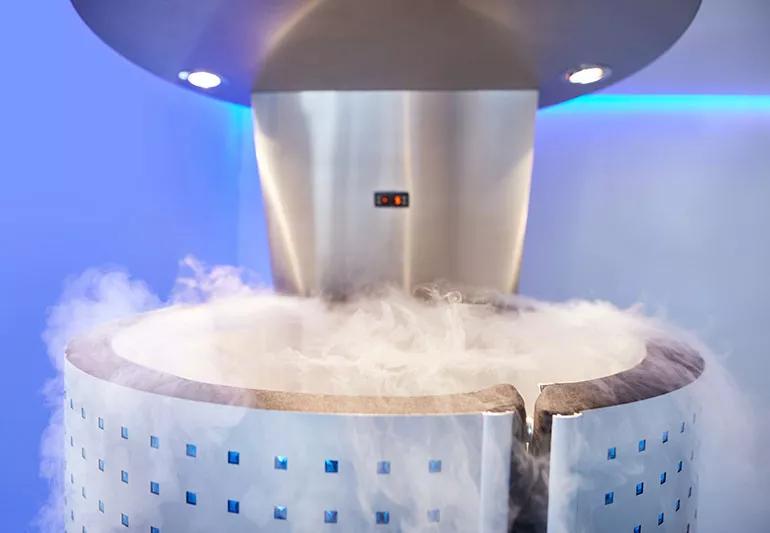Advertisement
The short answer from an exercise physiologist

A: If your goal is to simply dull aches and pains after a tough workout, the answer may be yes. But if you’re looking for a treatment that helps your muscles develop and grow stronger… well, it might not be your best choice.
Advertisement
Cleveland Clinic is a non-profit academic medical center. Advertising on our site helps support our mission. We do not endorse non-Cleveland Clinic products or services. Policy
There’s growing evidence that cold treatment may actually slow muscle recovery after workouts. That’s true of simple ice packs as well as cryotherapy chambers, which can subject your body to temperatures below -200 degrees Fahrenheit.
Confused? That’s understandable given that icing has been the go-to recovery method for athletes for decades.
But the thinking is changing. Even the sports medicine doctor who encouraged icing for athletic injuries decades ago as part of his RICE method (rest, ice, compression and elevation) has backed away from cold treatment.
So why is that, you ask? Basically, icing your sore muscles puts the freeze on your body’s natural – and highly effective – healing response.
That soreness you feel after a tough workout is the byproduct of the strain you put on your muscles. Pushing hard while exercising results in microscopic tears in your muscle fibers. Your body responds accordingly, increasing blood flow to the area to repair the damage.
This process of tearing down and building up your muscles makes you stronger in the long run. Unfortunately, the price of those gains is often inflammation and some discomfort.
Cryotherapy chambers, or just icing, disrupt that natural process. The cold constricts blood vessels in the iced area, sending blood away from that part of your body and toward your core and vital organs.
Advertisement
That diversion of blood flow slows your metabolic process, which reduces swelling. The cold also numbs the area to temporarily relieve some pain.
So you will feel better, but you might not be getting as much out of a workout as you thought. That makes cold treatments less than ideal if you’re in the strength-building phase of a training regimen.
Now, this doesn’t mean it’s time to thaw every ice pack. Cold treatments may be the right decision if you’re looking for short-term recovery after a workout instead of long-term gains. Make the decision based on your needs.
Consider other recovery options, too, such as foods that fight inflammation and other tips.
As far as the best way to get a whole-body cold treatment, cryotherapy chambers are trendy with a definite coolness factor. (Just do an internet search for professional athletes and celebrities who use the device and you’ll understand.)
But a simple ice bath pretty much offers the same treatment benefits of a high-tech cryotherapy chamber without the cost, which typically starts around $50 for a few minutes.
— Exercise physiologist Zach Carter, CSCS
Advertisement
Learn more about our editorial process.
Advertisement

Fat exits your body in your breath, pee and sweat

Somatic Pilates is less form-focused and more experience-focused

These illegal supplements have negative impacts for vital organs and may cause psychosis, heart attacks and more

Having a well-rounded, healthy nutrition plan is just as important as staying consistent with your exercise routine

Exercising and stretching your lower back, hamstrings, hips and quads can greatly improve your physical well-being

Perfecting the squat before trying a lunge can start you off on the right foot

Good form is essential for dumbbell rows, which work out your mid- and upper back

Low-level, dull soreness that goes away with rest or physical activity is normal — but if it lingers or worsens, see a healthcare provider

If you’re feeling short of breath, sleep can be tough — propping yourself up or sleeping on your side may help

If you fear the unknown or find yourself needing reassurance often, you may identify with this attachment style

If you’re looking to boost your gut health, it’s better to get fiber from whole foods